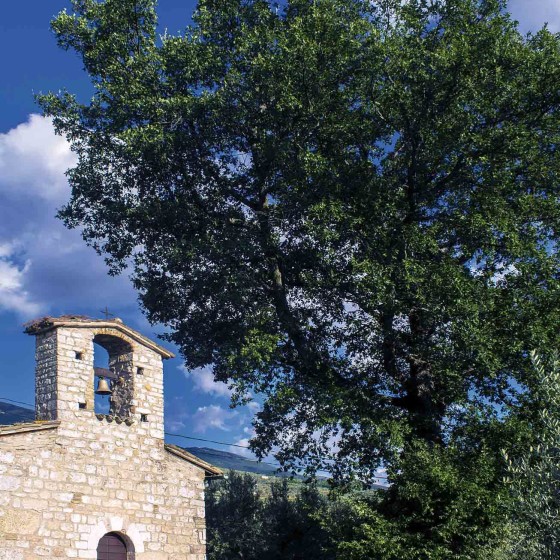Non lontano dall’abitato di Collecchio troviamo la chiesa di Sant’Andrea edificata in prossimità di un fosso, oggi quasi sempre asciutto, ma che in passato ha esondato varie volte.
Da notizie avute sul posto, infatti, questa struttura è stata oggetto di vari restauri per i danni causati da eventi alluvionali, l’ultimo dei quali accaduto circa sessanta anni or sono.
All’interno sono presenti resti di dipinti del XVI secolo; in particolare sono ancora ben visibili le immagini dei santi Rocco e Andrea.
Guardando verso la parete di fondo, san Rocco è raffigurato sulla sinistra, riprodotto, come da iconografia classica, in abiti da pellegrino e con il bastone.
Durante il pellegrinaggio verso Roma, Rocco fu contagiato dal morbo della peste e per questo è usualmente ritratto afflitto da una piaga, dipinta sulla coscia e ben riconoscibile anche nell’affresco presente all’interno di Sant’Andrea.
Nella chiesa sono state rinvenute interessanti epigrafi funerarie classiche, alcune delle quali sono conservate nel museo di Trevi. Un’epigrafe è inserita nella struttura muraria, nella parte bassa dello spigolo settentrionale.
Sant’Andrea, come San Pietro a Pettine, fu eretta lungo un’antica viabilità che collegava Trevi alla pianura.
Nei pressi di Sant’Andrea vegeta un patriarca verde, una bellissima roverella censita con il progetto ‘Patrirachi verdi’ della Comunità montana (2015): ROVERELLA – TREVI, SANTA MARIA IN VALLE, VIA COLLECCHIO, CHIESA DI SANT’ANDREA.
ENGLISH

ABSTRACT
It is a small country church with the remains of paintings of the sixteenth century: we can still see the images of Saints Rocco and Andrea.
It shows clear signs of aging, even if it has already been the subject of a proper restoration.
From information received, the last restorations were necessary for flood occurred about fifty years ago, for the flooding of the ditch of Santa Maria in Valle.
This church, like that of San Pietro a Pettine, stood on the road coming down from Trevi to the valley.
There were found interesting funerary classic inscriptions, some of which are preserved in the museum of Saint Francis in Trevi.
One epigraph, inserted into the wall structure, is visible at the bottom of the northern edge.
Saints
St. Andrew – is celebrated on November 30th
St. Andrew is linked to the tradition of the cross X shaped, that takes, in fact, the name of the saint.
The St. Andrew’s cross appeared for the first time in the iconography of the saint from the tenth century, but no source mentions it as an element of his martyrdom.
In the classical iconography this saint is often depicted with a fishing net.
San Rocco – is celebrated on August 16th.
In the classical iconography he is depicted dressed as a pilgrim, usually with stick and shell, with an injury on his leg.
The shell, originally, was the symbol of the pilgrimage to Santiago de Compostela, then it was extended to represent, in general, all the pilgrims.
Another factor often present in depictions of St. Rocco is the dog: the tradition says that when Rocco fell sick of pest and he was alone and starving, a little dog brought him bread to feed him.


